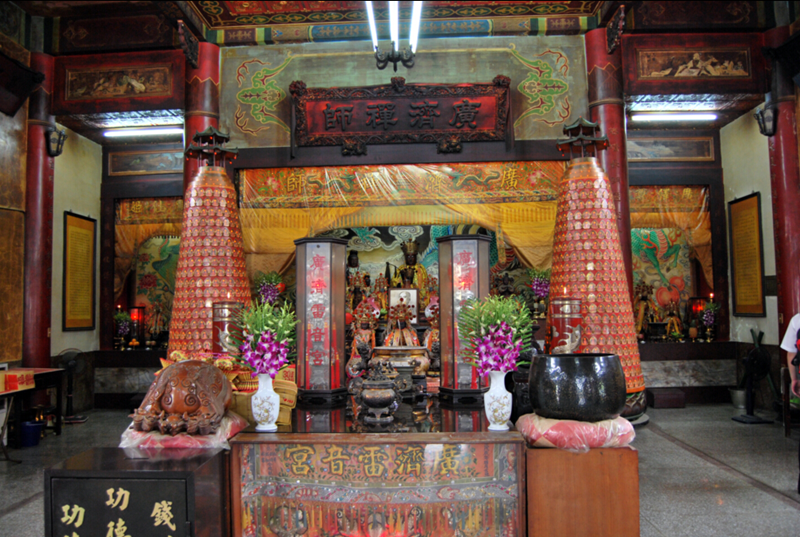
The Sanping Temple is located in Wenfeng town. [Photo/fujian-szwhg.chaoxing.com]
Worship of Master Sanping is mostly practiced in southern Fujian and eastern Guangdong, but is well-known in China's Taiwan, Hong Kong, and Macao, as well as in Southeast Asian countries such as the Philippines, Singapore and Indonesia. It was included as a folk custom in the fourth batch of national-level representative intangible cultural heritage items.
Sanping Temple was built 1,163 years ago in Wenfeng town, Zhangzhou, Fujian province. The temple is built against the mountain, with the front lower than the back, and has a symmetrical structure. The architectural pattern of three and a half halls is rare across the country. Inside the temple, Zen Master Yizhong (781-872) is enshrined, who was given the title of Grand Master Guangji, commonly known as Master Sanping.
After his passing, he gradually evolved into a Buddhist folk deity. The incense never stops burning at Sanping Temple. Every year, worship activities are held in Zhangzhou and Taiwan in honor of Master Sanping. They include rotational sacrifices, pilgrimages, and divination by shaking bamboo slips.
There are many branch temples of Sanping Temple, among which there are more than 50 in Taiwan alone. Every year, the activities of the belief custom of Master Sanping in Zhangzhou and Taiwan are held, and hundreds of thousands of believers participate, showing the common origin of the Patriarch culture belief on both sides of the Taiwan Strait.

Copyright © General Office of Fujian Provincial People's Government
Website Identification Code 3500000049Registration Number: 15003084
All rights reserved. The content (including but not limited to text, photo, multimedia information, etc) published in this site belongs to fujian.gov.cn.
Without written authorization from fujian.gov.cn, such content shall not be republished or used in any form.